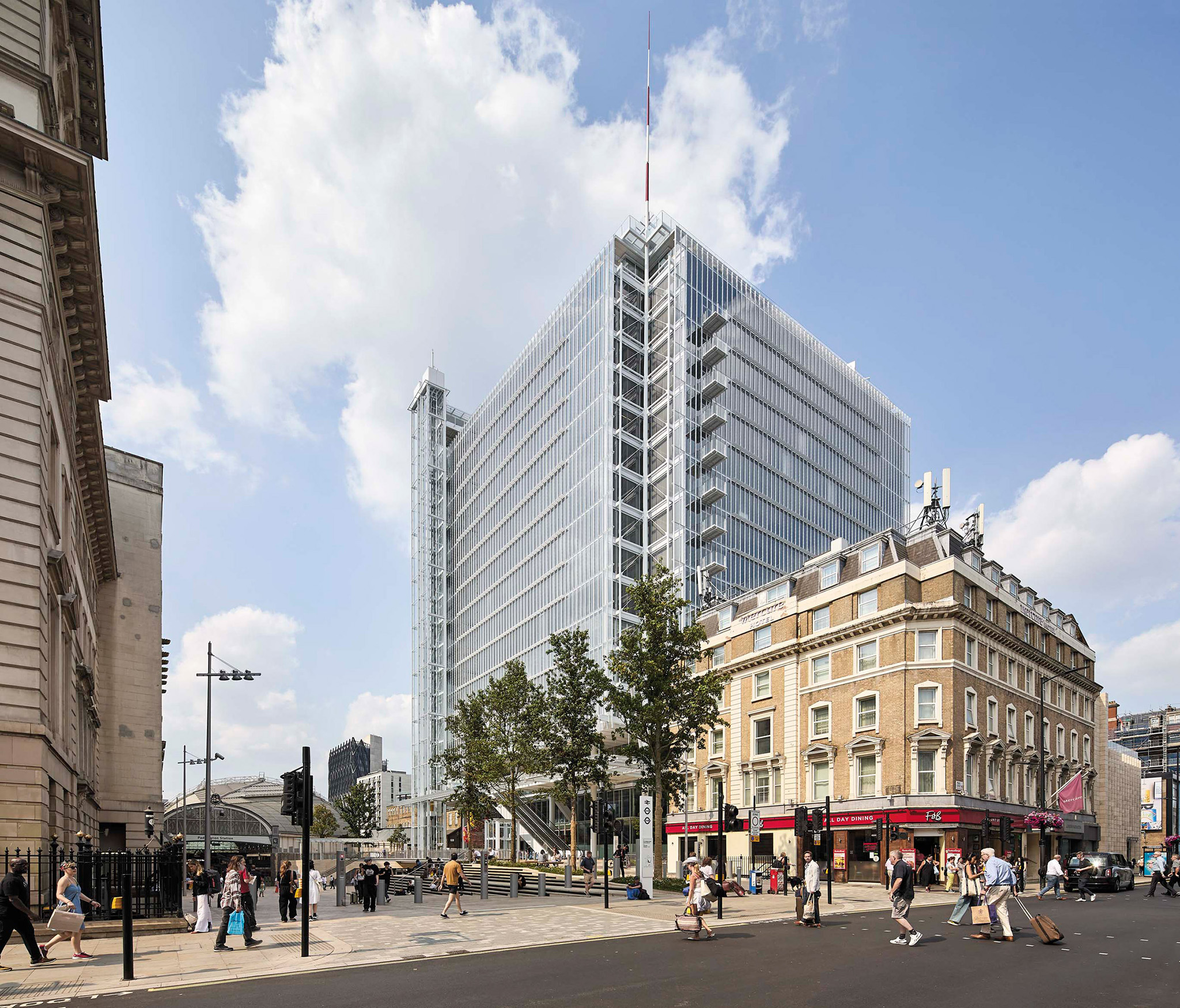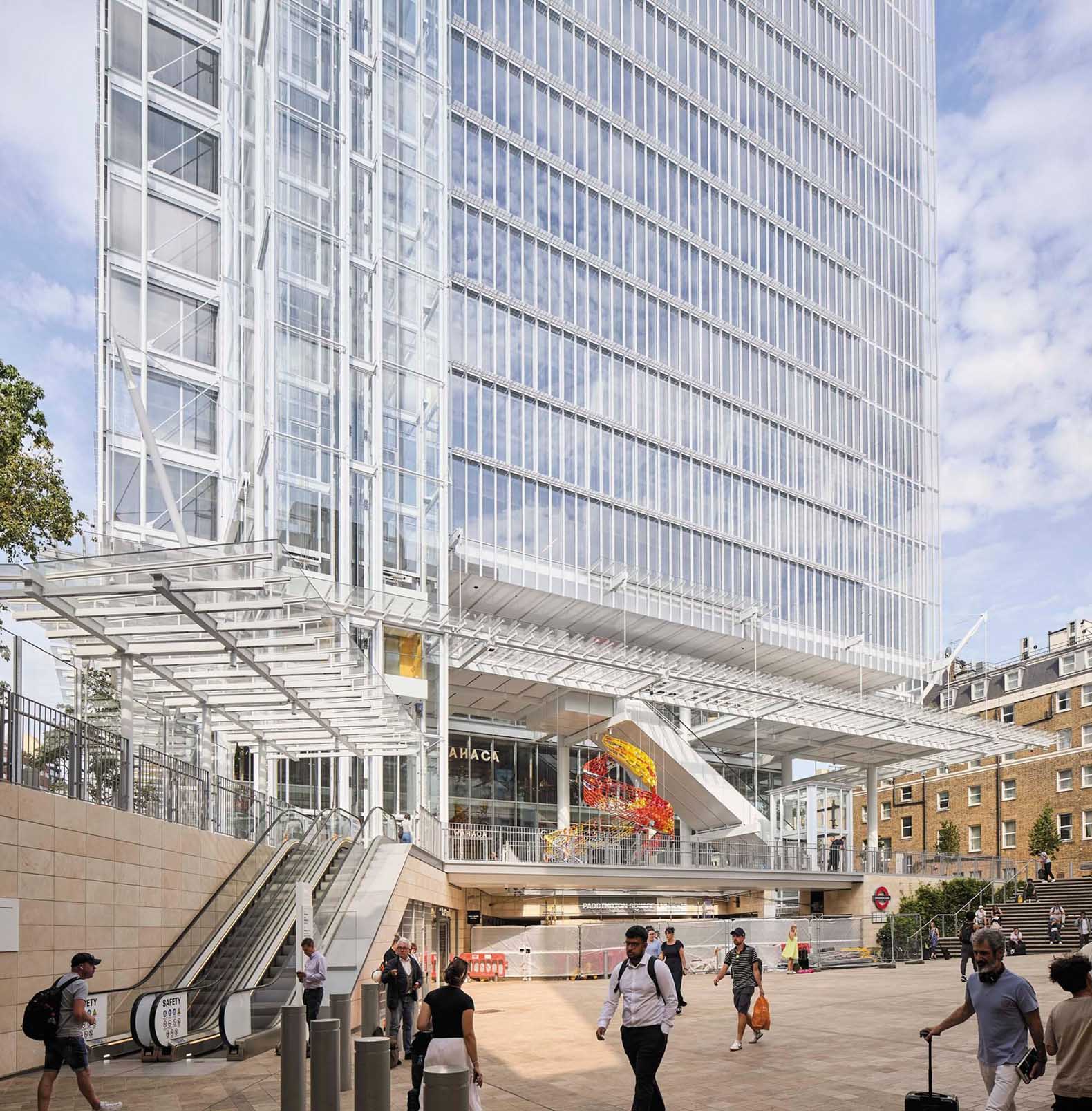
Renzo Piano Building Workshop's Paddington Square project has gone through several stages, on a journey that began in 2015 when Renzo Piano Building Workshop proposed a cylindrical mixed-use skyscraper for the site containing around 200 apartments along with offices and commercial spaces. The project and proposal evolved over these years to arrive at the current proposal: a transparent, cubic, mixed-use building.
The final result is a sample of Renzo Piano Building Workshop's (RPBW) work, in which special attention to detail can be appreciated, such as the narrow horizontal brises-soleil, or the 75cm façade module with its slender white slotted vertical fins, a piece to generate through its repetition a solid view from some angles and transparent from others.
The corners fold inwards generating one of the typical details that lighten Piano's volumes, making the façade glazing project slightly beyond the volume. In the northwest corner, two panoramic elevators with their movements and flows vertically energize the façade, providing independent access to the terrace, which is scheduled to open in 2025.
With a deep floor plan, a slightly off-center communications core and low ceilings of 2.9m, the glass envelope is especially necessary to make the interior spaces attractive to their future occupants.

Paddington Square by Renzo Piano Building Workshop. Photograph by Hufton + Crow.

Paddington Square by Renzo Piano Building Workshop. Photograph by Hufton + Crow.
Project description by Renzo Piano Building Workshop
Paddington Square a 17-storey mixed-use building will float above the ground floor. Facades under the building will be set back to maximize the public realm. A balanced mix of restaurants, bars, cafes and shops will animate the street and concourse levels.
The Paddington project aims to transform a neglected and poor-quality site into a world-class gateway to one of London’s most historic stations. This beautiful and generous piece of cityscape with clearly articulated desire lines to existing and newly created destinations will provide natural and instinctive way-finding through an animated and carefully landscaped public realm. The scheme will benefit not just the thousands of travellers that use the station daily, but also provide a sense of place and a destination to local residents. Above all, the project will bestow a world-class setting on this iconic station.

At the heart of this transformation will be a large new piazza formed by joining London Street with the previously inadequate station arrivals ramp. This will place the pedestrian experience at the heart of the scheme and create an iconic address for the new office building, overlooking the public realm.
Below ground a new and much enlarged ticket hall will be created, accessed from the piazza and providing a visually dynamic and spacious entrance into the combined Bakerloo and District & Circle line underground station. Step-free access is provided to all levels and the escalator capacity will be doubled.
The 17-storey building is a cubic volume of 14 office floors which provides prime quality working spaces for over 4000 people and brings valuable employment opportunities to the Paddington area. The remaining floors will host restaurants, bars, cafes and shops.

When you are standing in the Piazza in front of the station, you will look up and see a square screen of over 50 by 50 meters, expressing the geometry of cube. This screen is the double-skin facade of the office building to protect the solar screening venetian blinds. This system makes the building highly efficient to both save energy and provide natural daylight to penetrate deep into the office floors.
Panoramic lifts take the public up to level 17 offering a large terrace and a restaurant providing magnificent 270° views including Hyde Park, the City and virtually all of Westminster.




































































